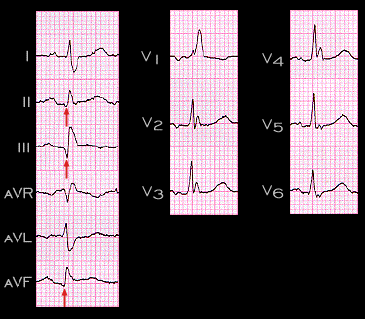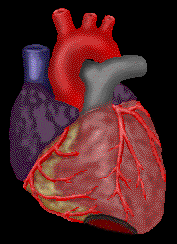

These abnormal Q waves are consistent with a prior myocardial infarction involving the inferior or diaphragmatic surface of the heart and will be discussed in greater detail in the chapter dealing with myocardial ischemia and infarction (Chapter 6). The point of this tracing and the previous tracing is that even in the presence of right bundle branch block, the initial portions of the QRS complex retain their diagnostic power because depolarization of the interventricular septum and left ventricle are not affected. As we shall see, this is in marked contrast to the situation in left bundle branch block.
